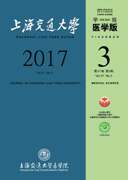Objective · To analyze the clinical distribution and drug resistance of Acinetobacter junii (A. junii) and Acinetobacter lwoffii (A. lwoffii) from a grade 3A hospital in Shanghai, China, and provide the foundation for prevention and control of infections caused by them. Methods · A. junii and A. lwoffii were collected from the hospital between Aug, 2011 and Aug, 2016. VITEK2 Compact of bioMérieux (French) was used for bacterial identification and antibiotic susceptibility tests, clinical information of each strain was also analyzed. Results · 28 strains of A. junii and 58 strains of A. lwoffii were enrolled. A. junii was mainly from the departments of urology, thoracic surgery and geriatrics, and the samples were mainly sputum and urine. The resistant rates of A. junii to gentamicin, ampicillin sulbactam, piperacillin, piperacillin/tazobactam, ceftazidime, cefepime, imipenem, meropenem, levofloxacin, ciprofloxacin and cotrimoxazole were 35.71%, 3.57%, 10.71%, 3.57%, 3.57%, 3.57%, 3.57%, 3.57%, 0, 3.57% and 35.71%, respectively. A. lwoffii was mainly isolated from the departments of urology, geriatrics, respiratory and renal medicine, and the samples mainly included urine, blood and sputum. The rates of antibiotics (mentioned above) resistance were 29.31%, 13.79%, 13.79%, 6.90%, 20.69%, 18.97%, 12.07%, 15.52%, 18.97%, 31.03% and 31.03%, respectively. The levels of antibiotic resistance of these two strains were constant during the five years. Conclusion · A. junii and A. lwoffii antibiotic resistant rates were much lower than those of reported A. baumannii, the over-all antibiotic resistances of A. junii were lower than those of A. lwoffii. This study provided fundamental data for prevention or control of these two strains by empirical use of antibiotics.

